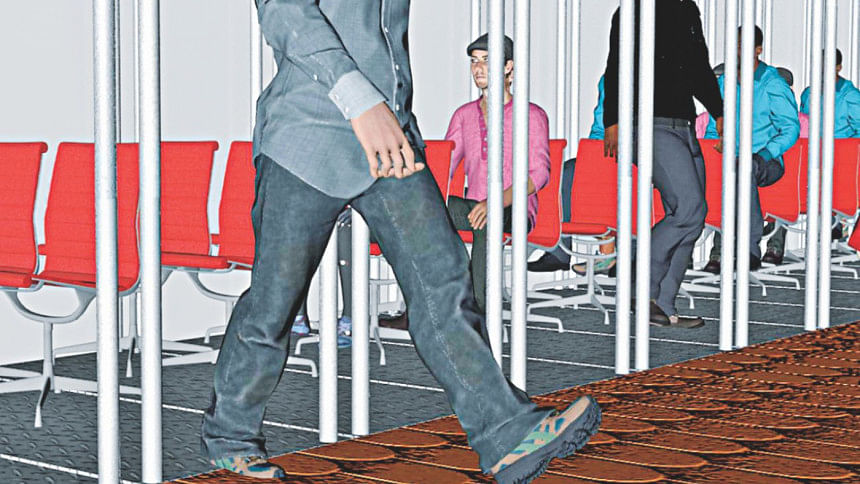Govt body to review 'moving road' concept

A design concept to ease Dhaka's traffic congestion, by creating an overhead moving walkway, is being reviewed by a government committee.
Abu Sayeed, who conceived the project last year, made the disclosure yesterday during a demonstration of his prototype at the parking area of his house in the capital's Mirpur.
On September 27, 2017, a working scale model of the moving road was first showcased in an exhibition at Bangladesh Shilpakala Academy in Dhaka. On October 30 this year, it was displayed at the monthly coordination meeting at the Prime Minister's Office.
Abu Sayeed informed that the government has formed a 10-member committee led by additional executive director of Dhaka Transport Coordination Authority (DTCA) Md Zakir Hossain Majumder. On November 26, the committee will sit in its second meeting in this regard.
The moving road, six feet in width, will be elevated 20 feet above the ground, with stations at every 200 metre intervals. It will stop every two minutes for 10 seconds for passengers to get on and off board. There will be seats on the road, as well as standing space.
Abu Sayeed claimed that a one-kilometer stretch of moving road -- that will run on electricity -- could transport 10,500 passengers one kilometre within a minute or two.
He further made the ambitious claim that the mode of transportation will cost one-fifth of the metro rail, with a cost of around Tk 200 crore per kilometre.
The same length of metro rail costs over Tk 1,000 crore, he said.
Besides, it will give city dwellers respite from traffic mess and air pollution by reducing dependency on public and private vehicles.
Contacted, Md Zakir Hossain Majumder told The Daily Star, “Conceptually, it a very good idea. However, it needs a lot of technical development, as there are lots of issues regarding safety of people.”
“We are going to sit in our second meeting soon. Our experts will consider how to adopt it in Dhaka city, and will place report to the government,” he added.
“Overpopulation and huge number of vehicles are the main causes behind traffic jam. Besides, construction of metro rail and flyovers cause extra sufferings for city dwellers. But one kilometre of moving road will need only 15 days to be constructed,” said Abu Sayeed, also a national award-winning filmmaker.
Moving walkways are most commonly found at airports, as well as at some subway stations, museum exhibits, supermarkets, zoos and theme parks. The longest outdoor covered walkway system was inaugurated in 1993 in Hong Kong, stretching over 800 metres and serving as a commuter transport as well as a tourist attraction.
The first moving walkway debuted at the World's Columbian Exposition of 1893, in Chicago, USA. Sprawling walkways as a common mode of transport in “megalopolis” (or “supercities”) is also a popular theme in science fiction, from 19 th-century literature by HG Wells, to later works of Isaac Asimov and Arthur C Clarke. The 1960s animated TV series “The Jetsons” also showed moving walkways everywhere, even in homes.

 For all latest news, follow The Daily Star's Google News channel.
For all latest news, follow The Daily Star's Google News channel. 



Comments